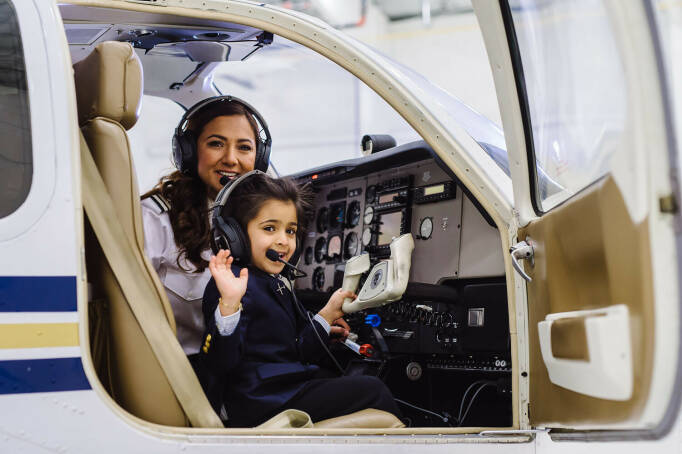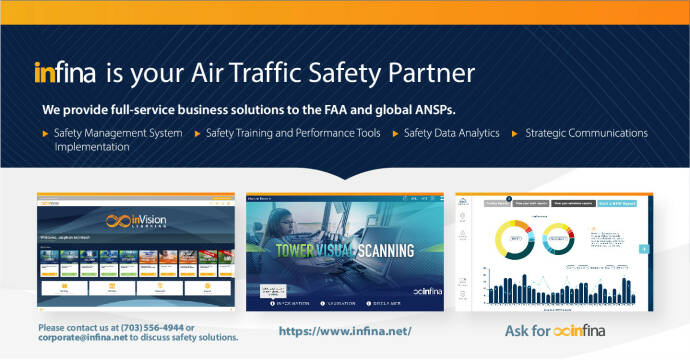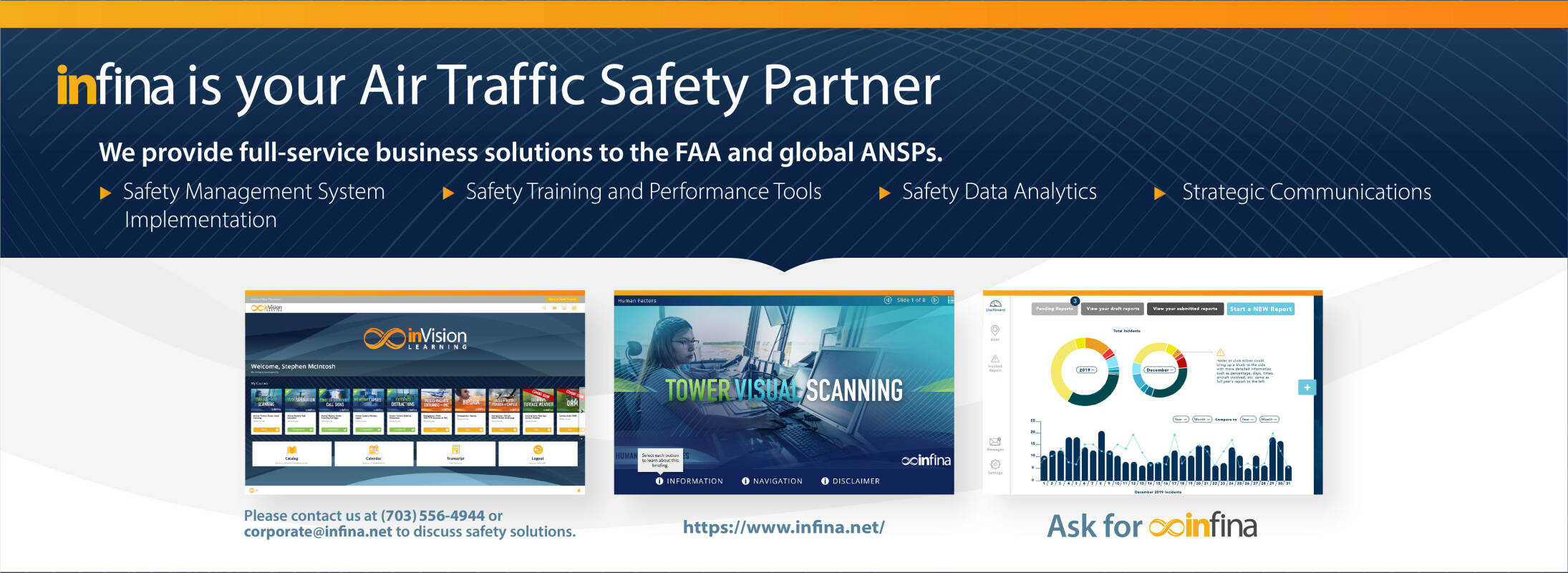Prior to his retirement, CANSO interviewed Melvin Cintron, Former ICAO Regional Director, North America, to discuss the latest diversity initiatives.

Airspace Article


Dreams Soar
Airspace World Executive Summit keynote speaker, Shaesta Waiz, is President of the Dreams Soar charity. Shaesta is the first certified female civilian pilot born in Afghanistan, and, in 2017, became the youngest woman to fly solo around the world in a single-engine aircraft.
Dreams Soar’s core mission is to inspire women to enter STEM (science, technology, engineering, math) fields of study and careers. Shaesta’s round-the-world flight inspired thousands of girls and young women to explore potential jobs in STEM-oriented industries, including aviation.


What is your regional ICAO office doing to support diversity?
The ICAO NACC Regional Office has been working for many years with the States of North America, Central America and the Caribbean to support the inclusion of women in the industry. In 2017, for example, for the 60th anniversary of the Regional Office in Mexico, we developed a programme to train at least 60 women in our region in different areas of aviation. This goal was surpassed and around 90 women were trained in different regional training schools or in diplomas in air navigation outside the region.
Our office has also promoted joint activities and meetings with our Member States to address such areas as leadership, so that we ensure not just inclusion but empowerment. Again, this is not just about employing women but utilising their skillset to give them meaningful careers that benefit the industry and society.
Also since 2017, we have had a programme in place to include female personnel in our body of regional specialists/experts. A multicultural professional body of men and women provides the most comprehensive skillset for our Member States and organisations and so brings the greatest benefit to our region.
We have three female Regional Officers with recognised experience and education that have contributed, and continue to contribute, to the progress of our Member States.
- Mayda Ávila, an industrial electrical engineer with a master's degree in Project Management and master’s degree in Air Navigation Management, leads the Communications, Navigation and Surveillance area (CNS), with extensive experience in the implementation of various air navigation systems.
- Sereya Schotborgh is the first female pilot in Curacao and the Netherlands Antilles, a flight inspector and specialist in the areas of operations and personnel licensing. She leads the area of Safety Implementation.
- Fabiana Todesco is a Production Engineer, with a master's degree in Aeronautical and Mechanical Engineering, and a master's degree in Air Navigation. She leads the Aerodromes and Ground Aids area, with extensive experience in strategic planning and airport construction.
It is important to note that these positions are not about fulfilling a gender quota. These women are at the top of their profession and have significantly advanced our industry and region through their expertise.
Where should an aviation company start if it wants to improve diversity?
Start by setting the goal of gender equality within your organisation. Then, develop policies to ensure diversity, and carry out all necessary actions that allow the integration of diverse personnel in your company.
Equally important is the creation of an organisational culture of inclusion based on the capacity and skills of professionals, regardless of their gender.
Companies must promote based solely on the skills and abilities of people, create defined promotion mechanisms and, above all, set measurement and improvement targets that ensure they meet their diversity objectives.
Within companies, for example, from the highest to the lowest level of leadership, there must be a culture of commitment to gender issues, coaching, and mentoring. I personally think that each leader and each manager must identify three or four people who have the ability for professional improvement and, within that, it is a moral duty to ensure gender inclusion.
How can the aviation sector be more inclusive?
It is important to resume the activities that had started before the pandemic, since the spread of COVID-19 has delayed development plans in this area.
The aviation sector must understand the benefits that gender inclusion provides in this industry, since aviation is an activity that directly and indirectly benefits society. Aviation must develop more inclusive proposals, ensure that gender gaps are eliminated, and promote qualified female personnel in the different areas of the business.
Are there regional differences that need to be considered?
Yes, it would be a serious mistake not to take them into account. But it would be even more serious to accept these regional differences as an excuse not to promote diversity.
The differences lie in the agendas of the States and the mechanisms for implementing gender policies across the regions. The most important pillar is education. New generations must be taught that all people have a right to equality and tolerance, regardless of their gender.
The challenge of gender inclusion is to ensure women's participation in economics, education, health and politics – in fact, in all aspects of social and business life. This participation will not only help the development of women in different areas but will also benefit society directly.
What are the main challenges for aviation companies if they want to pursue diversity?
Getting started is the biggest challenge. Organisations must leave preconceived ideas aside, especially those regarding the conventional roles that women have had over the years.
The creation of an inclusive policy that seeks the best talent for companies, regardless of their gender, is one of the mechanisms by which the industry will ensure it has the best-qualified personnel. Other actions, such as the creation of equal achievement-focused work groups and the impartial treatment of staff are important factors.
Why should the industry pursue diversity?
To develop this industry, we must have the necessary human resources to support current and future aviation services. And most of the population are women. They contribute directly to the social and economic development of countries and they can contribute to aviation too.
States and the industry would benefit from increased diversity. It provides innovation, the exchange of ideas and different points of view that enrich the activities of organisations.
But diversity is not simply about employing more women. It is committing to employing trained women with the necessary profiles, experience and education.
To do that, it is first necessary to eliminate the barriers that have prevented the hiring of female personnel, break down preconceived ideas and give women the opportunity to progress their careers based on their ability.
Although it is very easy to say that vacancies are open to women, on many occasions capable women do not apply for these positions because they are aware of the barriers they face.
At ICAO, we ensure that the information on available positions in all areas reaches international organisations and that this information is shared, and we encourage women with the relevant qualifications to apply.


Prior to his retirement, CANSO interviewed Melvin Cintron, Former ICAO Regional Director, North America, to discuss the latest diversity initiatives.

Read full article



Airspace World Executive Summit keynote speaker, Shaesta Waiz, is President of the Dreams Soar charity. Shaesta is the first certified female civilian pilot born in Afghanistan, and, in 2017, became the youngest woman to fly solo around the world in a single-engine aircraft.
Dreams Soar’s core mission is to inspire women to enter STEM (science, technology, engineering, math) fields of study and careers. Shaesta’s round-the-world flight inspired thousands of girls and young women to explore potential jobs in STEM-oriented industries, including aviation.
Dreams Soar

What is your regional ICAO office doing to support diversity?
The ICAO NACC Regional Office has been working for many years with the States of North America, Central America and the Caribbean to support the inclusion of women in the industry. In 2017, for example, for the 60th anniversary of the Regional Office in Mexico, we developed a programme to train at least 60 women in our region in different areas of aviation. This goal was surpassed and around 90 women were trained in different regional training schools or in diplomas in air navigation outside the region.
Our office has also promoted joint activities and meetings with our Member States to address such areas as leadership, so that we ensure not just inclusion but empowerment. Again, this is not just about employing women but utilising their skillset to give them meaningful careers that benefit the industry and society.
Also since 2017, we have had a programme in place to include female personnel in our body of regional specialists/experts. A multicultural professional body of men and women provides the most comprehensive skillset for our Member States and organisations and so brings the greatest benefit to our region.
We have three female Regional Officers with recognised experience and education that have contributed, and continue to contribute, to the progress of our Member States.
- Mayda Ávila, an industrial electrical engineer with a master's degree in Project Management and master’s degree in Air Navigation Management, leads the Communications, Navigation and Surveillance area (CNS), with extensive experience in the implementation of various air navigation systems.
- Sereya Schotborgh is the first female pilot in Curacao and the Netherlands Antilles, a flight inspector and specialist in the areas of operations and personnel licensing. She leads the area of Safety Implementation.
- Fabiana Todesco is a Production Engineer, with a master's degree in Aeronautical and Mechanical Engineering, and a master's degree in Air Navigation. She leads the Aerodromes and Ground Aids area, with extensive experience in strategic planning and airport construction.
It is important to note that these positions are not about fulfilling a gender quota. These women are at the top of their profession and have significantly advanced our industry and region through their expertise.
Where should an aviation company start if it wants to improve diversity?
Start by setting the goal of gender equality within your organisation. Then, develop policies to ensure diversity, and carry out all necessary actions that allow the integration of diverse personnel in your company.
Equally important is the creation of an organisational culture of inclusion based on the capacity and skills of professionals, regardless of their gender.
Companies must promote based solely on the skills and abilities of people, create defined promotion mechanisms and, above all, set measurement and improvement targets that ensure they meet their diversity objectives.
Within companies, for example, from the highest to the lowest level of leadership, there must be a culture of commitment to gender issues, coaching, and mentoring. I personally think that each leader and each manager must identify three or four people who have the ability for professional improvement and, within that, it is a moral duty to ensure gender inclusion.
How can the aviation sector be more inclusive?
It is important to resume the activities that had started before the pandemic, since the spread of COVID-19 has delayed development plans in this area.
The aviation sector must understand the benefits that gender inclusion provides in this industry, since aviation is an activity that directly and indirectly benefits society. Aviation must develop more inclusive proposals, ensure that gender gaps are eliminated, and promote qualified female personnel in the different areas of the business.
Are there regional differences that need to be considered?
Yes, it would be a serious mistake not to take them into account. But it would be even more serious to accept these regional differences as an excuse not to promote diversity.
The differences lie in the agendas of the States and the mechanisms for implementing gender policies across the regions. The most important pillar is education. New generations must be taught that all people have a right to equality and tolerance, regardless of their gender.
The challenge of gender inclusion is to ensure women's participation in economics, education, health and politics – in fact, in all aspects of social and business life. This participation will not only help the development of women in different areas but will also benefit society directly.
What are the main challenges for aviation companies if they want to pursue diversity?
Getting started is the biggest challenge. Organisations must leave preconceived ideas aside, especially those regarding the conventional roles that women have had over the years.
The creation of an inclusive policy that seeks the best talent for companies, regardless of their gender, is one of the mechanisms by which the industry will ensure it has the best-qualified personnel. Other actions, such as the creation of equal achievement-focused work groups and the impartial treatment of staff are important factors.
Why should the industry pursue diversity?
To develop this industry, we must have the necessary human resources to support current and future aviation services. And most of the population are women. They contribute directly to the social and economic development of countries and they can contribute to aviation too.
States and the industry would benefit from increased diversity. It provides innovation, the exchange of ideas and different points of view that enrich the activities of organisations.
But diversity is not simply about employing more women. It is committing to employing trained women with the necessary profiles, experience and education.
To do that, it is first necessary to eliminate the barriers that have prevented the hiring of female personnel, break down preconceived ideas and give women the opportunity to progress their careers based on their ability.
Although it is very easy to say that vacancies are open to women, on many occasions capable women do not apply for these positions because they are aware of the barriers they face.
At ICAO, we ensure that the information on available positions in all areas reaches international organisations and that this information is shared, and we encourage women with the relevant qualifications to apply.

Airspace Article

